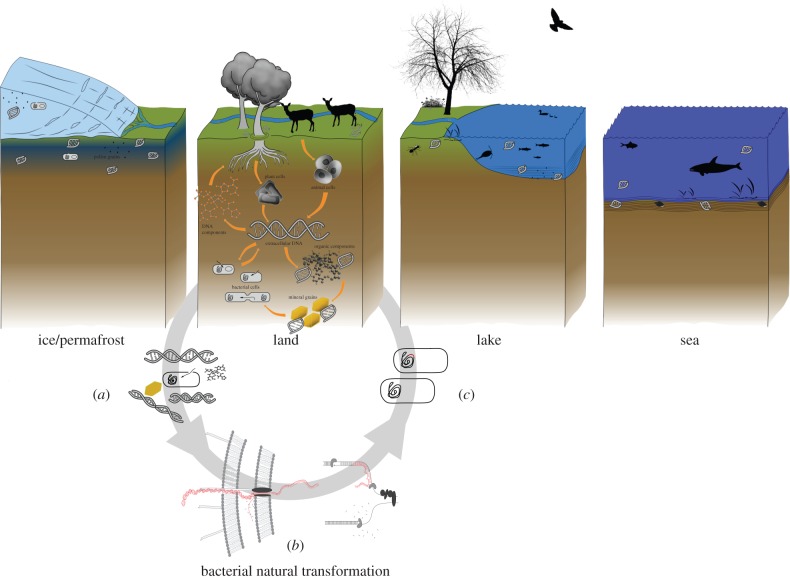Figure 1.
Environments where eDNA of plants and/or animals have been reported: basal glacier ice, terrestrial sediments, lake, rivers and lake sediments, and ocean water. The eDNA comes mainly from plant fine rootlets, faeces, urine and skin cells. The eDNA can remain in the cells, or be released from the cells in which case it may bind to inorganic particles that protect the DNA from microbial and spontaneous chemical degradation. Extracellular DNA may also be incorporated into the genomes of bacteria (bacterial natural transformation of short and degraded DNA). (a) The last may happen when extracellular DNA meets a bacterium's surface and crosses the outer cell wall via protruding structures named pili. At the inner membrane, one strand of DNA is transported into the cell while the opposite DNA strand is degraded. (b) Once inside the cell, the DNA fragment may encounter the bacterial genome and binding at a single-stranded region during genome replication. (c) When the two new genomes segregate, one of the daughter-cells carries the inserted environmental DNA sequence.

